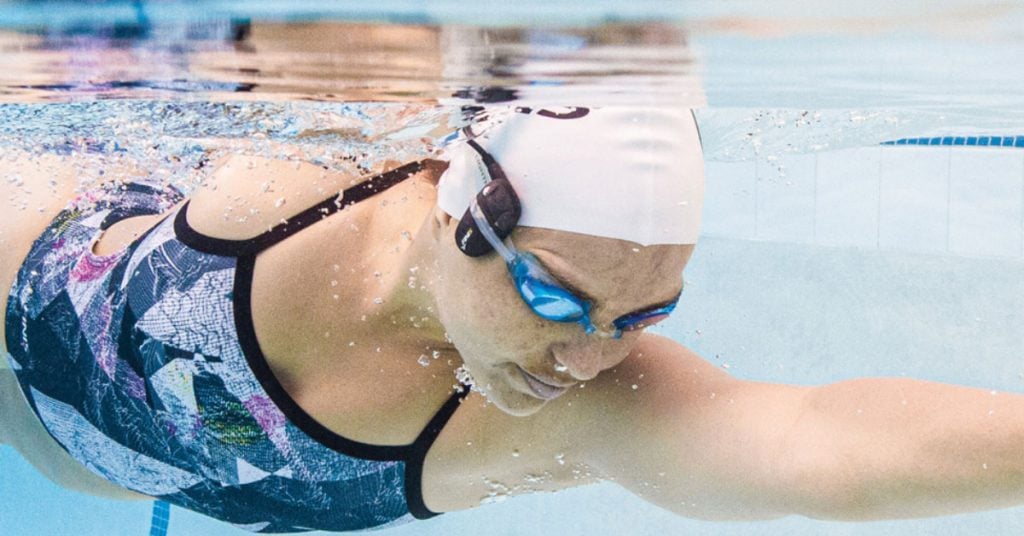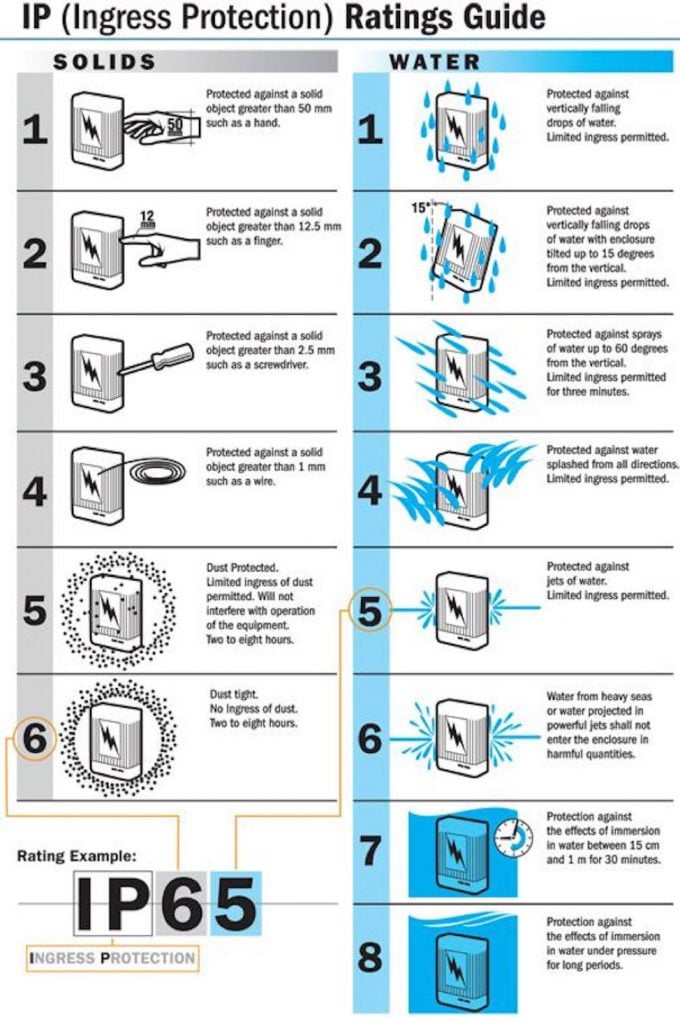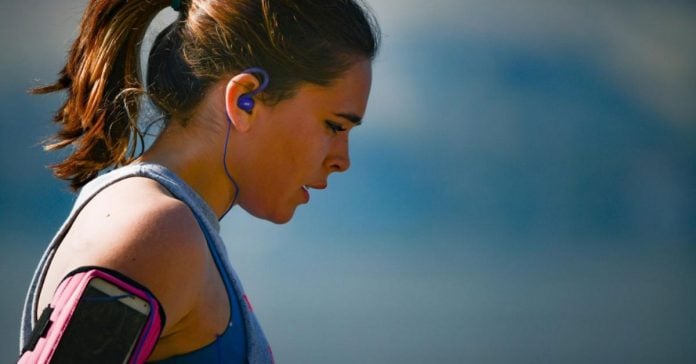If you’re looking for the best headphones for exercising, you need to look beyond things such as sound quality and pricing.
Studies show that music can help make your workout better. But if you can’t stand the music at your local gym, it’s better to bring along your own headphones for exercising.
In this article, you’ll learn how to choose the best headphones for your workouts. You’ll find out:
- the differences between in-ear, over-ear, and on-ear headphones and how to choose the best for exercising
- what the Ingress Protection (IPX) rating means and what IPX rating you should look for
- which headphones provide the best sound isolation properties
- whether you should get headphones with a built-in microphone or not
- how to find the most comfortable headphones for exercise
Let’s dive straight in.
When looking for headphones to wear while exercising, you need to look at the following:
- form factor
- IPX rating
- sound isolation
- microphone
- comfort

1. Form Factor
Headphones come in different forms. The most common you’ll find at the gym are in-ear headphones. You may also see over-ear headphones that cup over the entire ears or on-ear headphones that sit on top of the ears.Place bananas, pear (or apple), kale, orange juice, water, ice cubes and flaxseed in a blender. Pulse a few times, then puree until smooth, scraping down the sides as necessary.
a) In-ear headphones can be in-ear monitors (IEMs) or earbuds. These are lighter, more portable, and easier to clean than other headphones.
- IEMs have foam or silicone tips that are inserted into the ear canals. These create a seal that cuts out ambient noise, allowing you to listen at lower volumes. IEMs sit inside the ears and are less likely to fall off than earbuds. They may also come with neck bands or ear wings to keep them in place.
- Earbuds sit on the concha, the hollow bowl located just outside the ear canal. Earbuds are much more likely to fall off than IEMs because they’re normally available in a single size. If your ears are slightly larger or smaller than average, your earbuds may easily fall off during your workouts.
b) Over-ear headphones are more likely to stay on your head. Because of the large ear cups, they also tend to produce higher-quality sound. But over-ear headphones can get heavy, especially on longer workouts.
c) On-ear headphones can be a good alternative to over-ear headphones. They are lighter and more portable but will stay on your head as long as you’re not doing crazy acrobatics. Their downside is the cups press against your earlobes, which can cause discomfort if worn for too long.
2. IPX Rating
The average person produces up to 1.4 litres of sweat for every hour of exercise. That’s more than enough to damage your headphones if it’s not thoroughly protected.
If you’re looking for headphones for exercising, you need to find a pair that’s sweatproof. You can use the IP rating to figure out if your headphones can easily withstand sweat. In general, you need headphones with at least an IPX4 rating. This means water splashed on the headphones will not cause damage.
However, IPX4 headphones aren’t enough if you’re looking for waterproof headphones for swimming or other water sports. In this case, you need to look for headphones with a rating of IPX8. This rating means the headphones have a hydrophobic nano-coating that allow them to be submerged underwater for up to 3 meters for a long time.

3. Sound Isolation
If you’re working out at a gym that plays music you don’t like, you might want to get headphones with good sound isolation. IEMs, because they create a seal in the ear canals, are good at blocking out background noise. Some over-ear headphones also have electronic noise-cancelling features to minimize ambient sounds.
However, if you prefer to exercise outdoors, look for headphones that allow some background noise. This helps you be more aware of sounds coming from your surroundings, such as a beeping car.
4. Microphone
While some headphones are made only for playing music, you might want a pair with a built-in microphone. This lets you make calls without pausing your workouts. Most headphones have their mics on the ear cups or attached to the wires. They also usually have built-in controls for playing or pausing tracks, adjusting the volume, and answering calls.
5. Comfort
In-ear headphones are lighter and more comfortable, especially in warmer weather, but you may have to shop around to find a good pair that fits snugly inside your ears. If you prefer over-ear or on-ear headphones because they are easier to fit, keep in mind that they can get hot on your ears after a short while.
Also, look for wireless headphones. Wired headphones are okay for exercises with basic movements, such as walking or running. But for lifting weights, riding a bicycle, or other workouts, you don’t want wires tangling or tripping you on your feet.
Find Exercise Headphones That Work for You
There’s no one-size-fits-all pair of headphones, so you need to find a good pair that works for your workout preferences. Whether you choose in-ear, over-ear, or on-ear headphones, they must be comfortable and sweatproof. They must also have the right level of sound-isolating capability and have a built-in mic in case you need to take calls while exercising.


